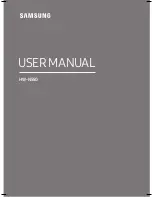
Retur
n
to
Section
TOC
Retur
n
to
Section
TOC
Retur
n
to
Section
TOC
Retur
n
to
Section
TOC
Retur
n
to
Master
TOC
Retur
n
to
Master
TOC
Retur
n
to
Master
TOC
Retur
n
to
Master
TOC
TROUBLESHOOTING & REPAIR
F-52
F-52
RANGER 305D
STATOR VOLTAGE TESTS
(continued)
FIGURE F.12 – RECEPTACLE LEAD LOCATIONS (TYPICAL)
AMPHENOL 1
KEY
E
C
D
A
B
L
K
J
M N
F
G H
I
CONTACTOR
CONTROL
L4
GROUND
120 VAC FOR WIRE FEEDER
40 VAC FOR WIRE FEEDER
21 WORK SENSE
2 TIMES THRU FERRITE
LEADS 75A, 76A, & 77A
REMOTE
CONTROL
TEST PROCEDURE
1. Perform the
Case Cover Removal
proce-
dure.
NOTE: Voltage tests of the 120 and 120/240 VAC
receptacles can be performed by placing the
meter probes directly into the appropriate con-
nection slots in the front of the receptacles rather
than testing at the lead connections described
below. If the meter probes are not long enough
to make contact with the conductors inside the
receptacles, test pins may be used.
To test the 120 VAC auxiliary winding:
1. Connect the volt/ohmmeter probes to either
120 VAC receptacle as follows.
2. For the upper receptacle, place the probes
directly into receptacle, or connect to leads
#3D and #5A. See Figure F.12. See wiring
diagram.
For the lower receptacle, place the probes
directly into the receptacle, or connect to
leads #6E and 5B. See Figure F.12. See
wiring diagram.
3. Start the engine and run it at high idle (3650
RPM).
4. Check the AC voltage reading. It should read
between 120 and 135* VAC.
To test the 240 VAC auxiliary winding:
1. Connect the meter probes to leads #6F and
#3E where they connect to the 120/240VAC
receptacle, or insert the probes into the 240
VAC connection slots in the front of the
receptacle. See Figure F.12. See wiring dia-
gram.
2. Start the engine and run it at high idle (3650
RPM).
3. Check the AC voltage reading. It should read
between 236 and 252 VAC.
4. If these voltage readings are not within the
specified limits, check for tripped or defective
circuit breakers, loose connections, or bro-
ken wires between the test points and the
stator windings. If there are no wiring prob-
lems, and the circuit breakers are not tripped
or defective, the stator is defective and
should be replaced.
















































